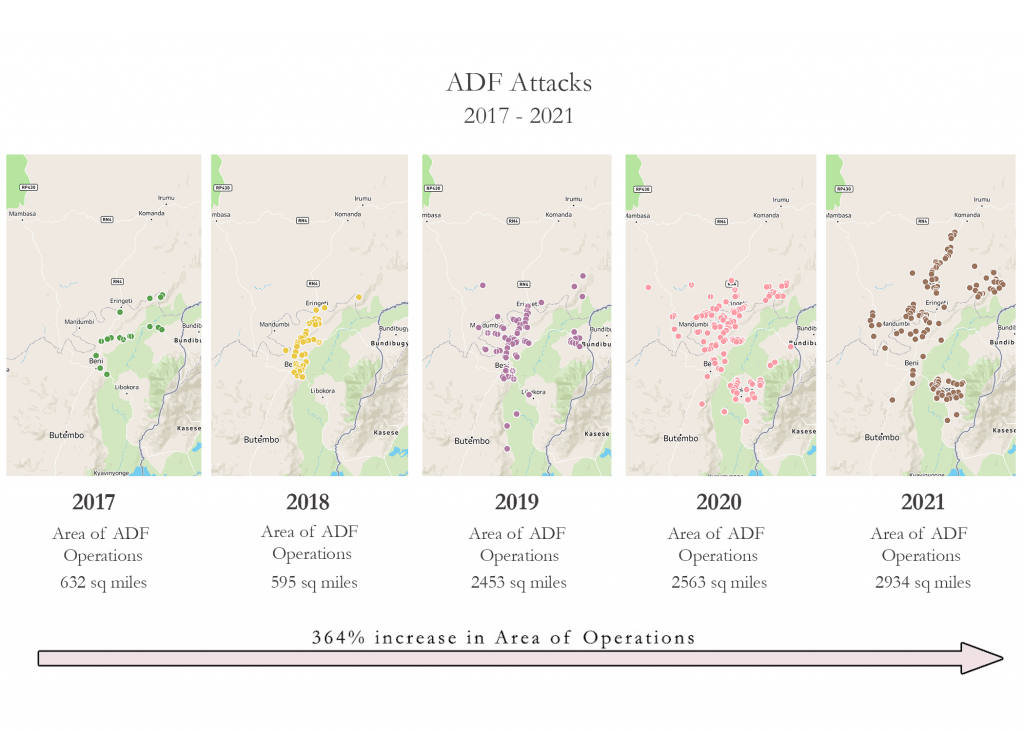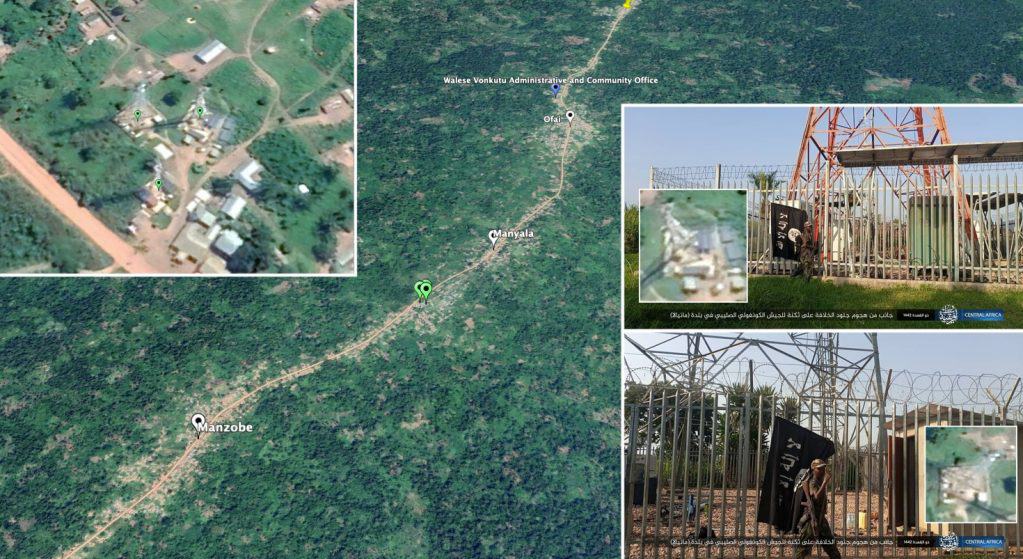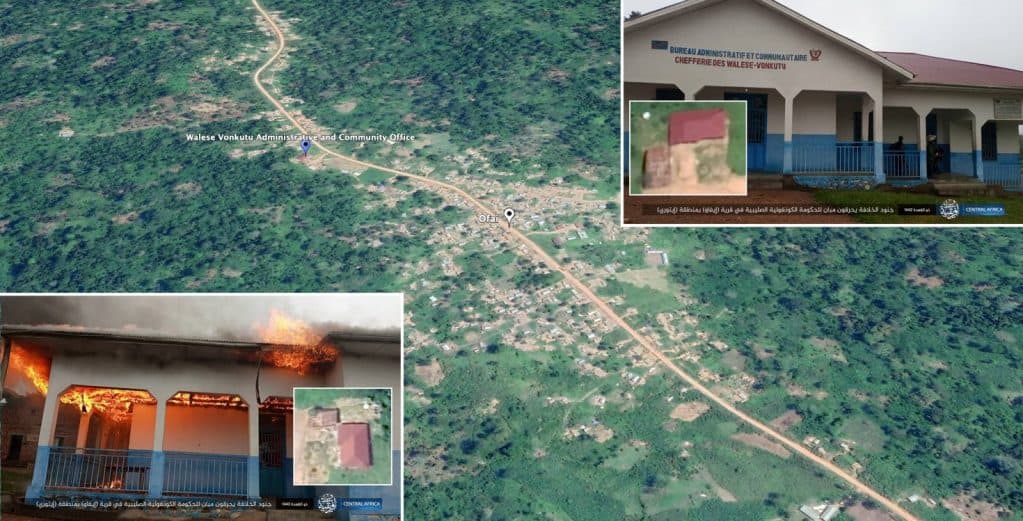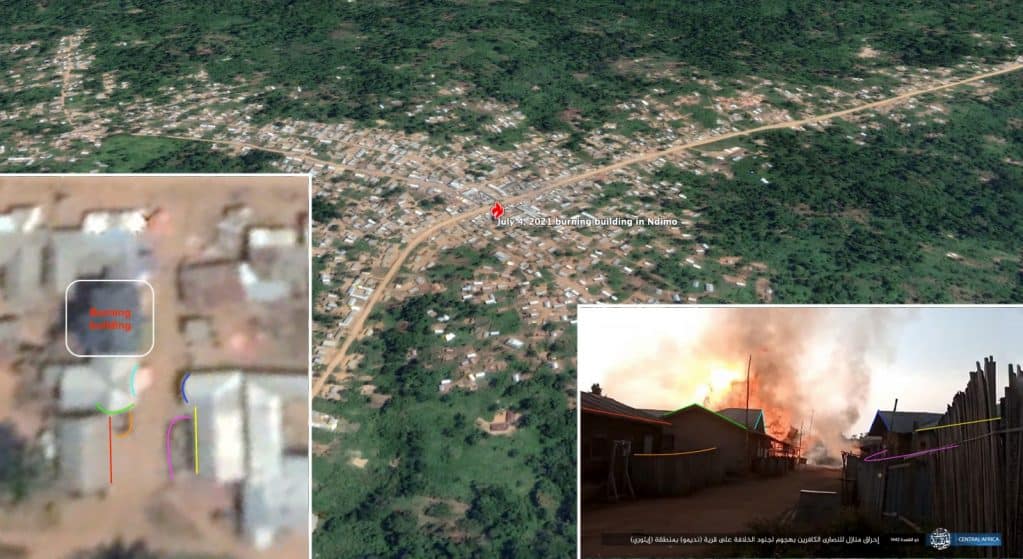
Over the last few months, the Congolese branch of the Islamic State’s Central African Province (ISCAP), known locally as the Allied Democratic Forces (ADF), has sustained a large-scale offensive in southern Ituri Province. This marks a significant shift from its normal areas of operation in the neighboring Beni territory of North Kivu province.
Based on numbers from the Kivu Security Tracker (KST), the ADF has been responsible for 66 attacks in southern Ituri which have left at least 207 people dead since June 1. Additionally, the group kidnapped at least another 171 people during these raids. The strikes have targeted both civilians and uniformed members of the Congolese security forces, or FARDC.
These numbers account for nearly 60% of all ADF operations in the last three months. In contrast, ADF’s Ituri operations only accounted for just 33% of its overall activity between March (when the KST began tracking incidents in Ituri) and May.
These numbers represent an 82% increase in Ituri-based activity since June 1.
For its part, the Islamic State has claimed 20 operations in Ituri since June in addition to releasing 81 photos and 2 videos from the attacks. Ituri-based attacks have accounted for 72% of all Islamic State claims in the DRC since June.
The ADF’s current Ituri offensive fits into the ADF’s larger expansion in both Ituri and North Kivu in recent years. In utilizing the KST’s data, there has been a stark increase in the group’s frequency of attacks, lethality, and areas of operation.
Since 2017, which represented the nadir of ADF operations and the group’s first confirmed contact with the Islamic State, there has been an 838% increase in attacks conducted by the ADF. Additionally, the overall square mileage of the group’s area of operation has likewise increased by 364% in the same timeframe. And perhaps most worryingly, the ADF has already committed 28 double-digit massacres in just eight months of 2021 while the group carried out 22 double-digit massacres throughout all of last year.
Two Simultaneous Offensives
The ADF’s Ituri operations have primarily been concentrated in two distinct areas of Ituri’s southern Irumu territory: along Route Nationale 4 (RN4) and near the town of Boga. The RN4 is a strategic road that links much of northeastern Congo with Uganda.
Much of the group’s attacks along the road have been between the locales of Eringeti and Komanda, which sits just south of the territory’s administrative center of Irumu town. Its northernmost documented attack, a July 7 raid on Pinzili village, occurred just a few kilometers south of Komanda.
The violence along the RN4 has primarily manifested in attacks on civilians. For instance, mass beheadings were reported along the road in both July and earlier this month. On July 13, local media reported that at least 18 bodies, most of them decapitated, were found in several villages close to the town of Idohu – though exact details of the attack remain murky. While on Aug. 3, an additional 16 people were found killed near the same town.
Other incidents explicitly targeting civilians include a July 30 ambush on a convoy of commercial vehicles, also just outside of Idohu. For its part, the Islamic State has directly mentioned the targeting of “Christians,” a catch-all term it uses for civilians in the area, just three times in Ituri since June. It has largely maintained that its battles have been against FARDC troops stationed along the highway.
As RN4 is one of the area’s main arteries, the jihadist group has likely prioritized targeting settlements and military positions along this route in order to take advantage of the relatively lighter presence of Congolese military forces and UN peacekeepers. Both FARDC and the UN’s MONUSCO forces have heavily deployed to Beni and other parts of Ituri, but the comparatively lighter deployments in Irumu territory offer an attractive opportunity for the ADF to assault vulnerable towns and villages along the RN4.
Performing Da’wah in Neighboring Communities
At the same time, the ADF has also focused its efforts near the town of Boga, where it perpetrated a massacre of 55 civilians in May. In addition to its normal assaults against civilians and FARDC positions, it has taken a slightly different approach to its Boga operations, by incorporating da’wah activities, or proselytizing, to civilians to adopt the Islamic State’s version of Islam. The implementation of da’wah in eastern Congo is a new phenomenon for ISCAP and a significant shift in the ADF’s historical modus operandi.
For example, videos emerged on Congolese social media earlier this month purporting to show a group of Banyabwisha civilians near Boga pledging bay’ah, or allegiance, to ISCAP. The Banyabwisha community are a Kinyarwanda-speaking Hutu minority in Congo with long- standing disputes with other communities over land rights and are often accused of being foreigners and therefore ostracized.
Since 2015, significant numbers have migrated into Irumu territory, precipitating disputes with resident communities and accusations of Banyabwisha involvement in Ituri’s other intercommunal conflicts.
As these disputes have escalated, the ADF has inserted itself on the side of the Banyabwisha against their local rivals, providing military support and seemingly seeking to build the kind of domestic constituency that the ADF — long-dominated by Ugandans — have historically lacked in eastern Congo.
It is likely the bay’ah videos came after the Islamic State’s men conducted outreach activities in order to bring the community under its fold. There is evidence of this occurring elsewhere near Boga, which has been documented by the Islamic State’s own central media apparatus.
On Aug. 9, the Islamic State said that its men took over two villages in southern Ituri close to Boga, Malibongo and Mapipa. Attached to the communique was a photo purporting to show an ADF fighter “inviting Christians in Mapipa village to the Islamic religion.” The picture marked the first time that any jihadist da’wah activity has been explicitly shown taking place inside eastern Congo.
While the ADF has in the past cultivated cooperative relationships with local communities — in particular significant intermarriage with prominent ethnic Vuba families, recruitment of Vuba combatants, and providing support to Vuba chiefs in land disputes with other groups during the early 2000s — it has not previously framed such outreach as da’wah.
These recent claims of proselytizing to the Banyabwisha thus constitute the first time the group has been publicly shown explicitly proselytizing in Christian villages and a major shift in the ADF’s behavior towards Congolese civilian communities since its evolution into an Islamic State affiliate began in 2017.
Such a model of outreach to nearby communities and potential voluntary recruitment from them has major implications for the ADF’s future trajectory, and one largely determined by the ADF’s unique context as compared to other Islamic State affiliates on the continent.
Unlike most Islamic State affiliates, which typically recruit from and seek to govern – albeit brutally – local Muslim communities, the ADF operates in a part of Congo whose Muslim community represents only a tiny fraction of the population.
Instead, much of the ADF’s manpower is composed of foreign recruits who enter Congo to voluntarily join the ADF or who are tricked through false promises of employment. Within the group, Congolese form the second largest nationality after Ugandans — the nationality of most of the leadership — but Congolese members are typically press-ganged into the group following kidnappings.
This significantly restricts the ADF’s ability to expand outreach to local communities, much less govern them according to its interpretations of Islamic law.
This recent outreach to Banyabwisha communities – framed by the Islamic State as seeking the conversion of Christians – is thus the ADF’s first foray into circumventing that unique hurdle to its adoption of the Islamic State’s typical strategy of embedding itself in local communities.
Geolocating the Islamic State’s Claims
As mentioned, the Islamic State has heavily documented the ongoing Ituri offensive in its propaganda. In geolocating the Islamic State’s media, it is possible to further corroborate some of its claims. In particular, three examples released by the Islamic State from recent ADF raids in Ituri illustrate aspects of the ADF’s communications with the Islamic State and confirm its accounts of those Ituri-based incidents.
On June 27th at around 4pm Central African Time (CAT), ADF fighters attacked Manyala village along the RN4, which was reported in local media outlets some 18 hours later as an attack on nearby Manzobe village. Just 8 hours after these first reports in local media emerged, Islamic State propaganda claimed that ISCAP had killed two FARDC soldiers in an attack on a barracks in Manyala.
Almost a day later, IS media published several photos of the attack, enabling confirmation of the location claimed in their statements through the geolocation of prominent cell phone towers in the town. IS’s propaganda releases accurately identified the location of the attack before local outlets and quickly published exclusive media identifiably taken at the claimed location.

On June 29, IS’s media channels released a statement claiming an attack on Ofai village, stating that government buildings were burned. Photos published the next day showed ADF fighters occupying Ofai, and pictures of Walese Vonkutu Chefferie’s administrative headquarters being burned could be geolocated to the northern outskirts of the town.

While local media had been reporting on attacks along the RN4, the burning of the administrative headquarters in Ofai was not specifically mentioned in local reporting until June 30th, around 15 hours after IS’s first claim of the attack was published. This demonstrated that ADF were not only sending specific, accurate information about their attacks to IS’s media apparatus, but that in some cases, IS’s propaganda claims were the first publicly available reports of the attacks at all.
On July 5, IS media claimed an attack on a “Christian village” in Ituri, posting a photo of burning buildings two hours later with a caption that they were in Ndimo, also along the RN4. The photo can be geolocated to the village, but no local media outlets specifically reported an attack on the village on July 4.

A Facebook post by a local resident, however, stated that an attack had occured in Ndimo on July 4, burning several construction vehicles. IS media thus accurately claimed an attack that local outlets had missed and quickly published photos confirming the location claimed in its propaganda release.
In all these cases, it is clear that the ADF are rapidly relaying battlefield updates to the Islamic State’s central media apparatus, as well as sending pictures and videos of its attacks.
By geolocating photos posted by the Islamic State and cross-referencing propaganda releases with the timelines of local media reporting, we can confirm not only that the ADF is sending exclusive media to the Islamic State documenting the ADF’s attacks, but that the ADF is relaying accurate geographic information about those attacks to the Islamic State before that information is accessible through monitoring of local reporting.
This serves to illustrate close communication between the Islamic State’s central apparatus and its local wing, capable of issuing accurate reports as quickly as within 11 hours of the attack taking place, and in one case, more than 15 hours before the first reports of the attack began to appear in local media.
The frequency, accuracy, and exclusive nature of ADF media content published by the Islamic State’s media apparatus clearly demonstrates the close-knit relationship between the two organizations, and one whose trajectory is towards tighter integration.
And while much of its recent focus in the last three months has been in Ituri, the ADF has continued to attack in its normal areas of operation in the Rwenzori sector of Beni territory. The Islamic State, for its part, has chosen to largely focus on highlighting the group’s Ituri-based operations – and relaying accurate and often expedient claims of responsibility therein. But given recent shifts in the ADF’s tactics, however, the group’s expansion into Ituri may not just be a propaganda ploy.
Caleb Weiss and Ryan O’Farrell are senior analysts at the Bridgeway Foundation, a philanthropic organization dedicated to ending and preventing mass atrocities.







